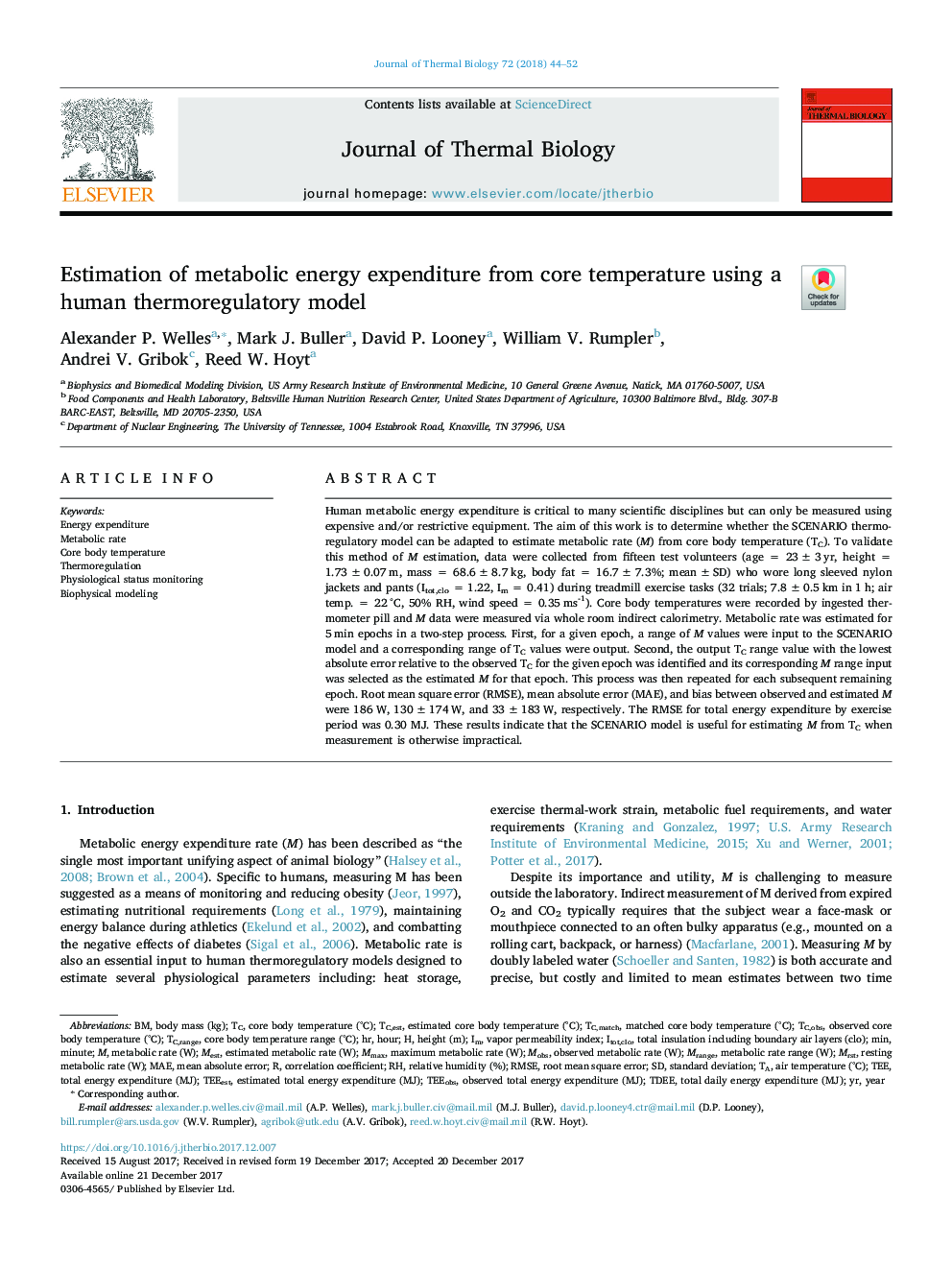| Article ID | Journal | Published Year | Pages | File Type |
|---|---|---|---|---|
| 8650094 | Journal of Thermal Biology | 2018 | 9 Pages |
Abstract
Human metabolic energy expenditure is critical to many scientific disciplines but can only be measured using expensive and/or restrictive equipment. The aim of this work is to determine whether the SCENARIO thermoregulatory model can be adapted to estimate metabolic rate (M) from core body temperature (TC). To validate this method of M estimation, data were collected from fifteen test volunteers (age = 23 ± 3 yr, height = 1.73 ± 0.07 m, mass = 68.6 ± 8.7 kg, body fat = 16.7 ± 7.3%; mean ± SD) who wore long sleeved nylon jackets and pants (Itot,clo = 1.22, Im = 0.41) during treadmill exercise tasks (32 trials; 7.8 ± 0.5 km in 1 h; air temp. = 22 °C, 50% RH, wind speed = 0.35 ms-1). Core body temperatures were recorded by ingested thermometer pill and M data were measured via whole room indirect calorimetry. Metabolic rate was estimated for 5 min epochs in a two-step process. First, for a given epoch, a range of M values were input to the SCENARIO model and a corresponding range of TC values were output. Second, the output TC range value with the lowest absolute error relative to the observed TC for the given epoch was identified and its corresponding M range input was selected as the estimated M for that epoch. This process was then repeated for each subsequent remaining epoch. Root mean square error (RMSE), mean absolute error (MAE), and bias between observed and estimated M were 186 W, 130 ± 174 W, and 33 ± 183 W, respectively. The RMSE for total energy expenditure by exercise period was 0.30 MJ. These results indicate that the SCENARIO model is useful for estimating M from TC when measurement is otherwise impractical.
Keywords
Related Topics
Life Sciences
Agricultural and Biological Sciences
Agricultural and Biological Sciences (General)
Authors
Alexander P. Welles, Mark J. Buller, David P. Looney, William V. Rumpler, Andrei V. Gribok, Reed W. Hoyt,
